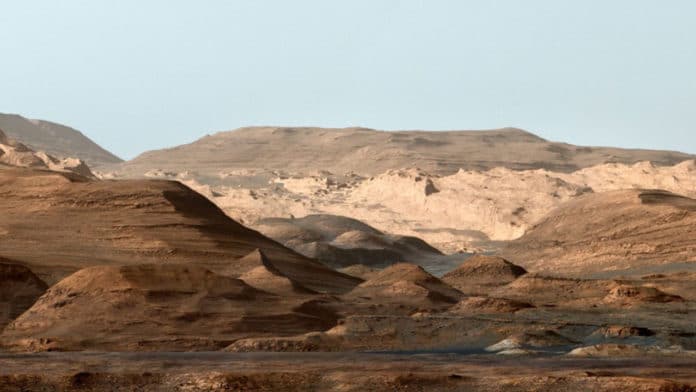Scientists analyzed the data collected by NASA’s Curiosity rover and discovered traces of ancient megaflood on Mars’ Gale crater. This megaflood was thought to be of unimaginable magnitude hit Gale Crater on Mars’ equator around 4 billion years ago.
The findings- efforts of a joint project by scientists from Jackson State University, Cornell University, the Jet Propulsion Laboratory, and the University of Hawaii- indicates that the possibility that life may have existed there.
The raging megaflood – likely ignited by the heat of a meteoritic impact, which unleashed ice stored on the Martian surface – set up huge waves that are tell-tale geologic familiar to scientists on Earth.
The impact released carbon dioxide and methane from the planet’s frozen reservoirs. The water vapor and release of gases combined produce a short period of warm and wet conditions on the red planet.
Condensation formed water vapor clouds, which in turn created torrential rain, possibly planetwide. That water entered Gale Crater, then combined with water coming down from Mount Sharp (in Gale Crater) to produce gigantic flash floods that deposited the gravel ridges in the Hummocky Plains Unit and the ridge-and-trough band formations in the Striated Unit.
Co-author Alberto G. Fairén, a visiting astrobiologist in the College of Arts and Sciences, said, “We identified megafloods for the first time using detailed sedimentological data observed by the rover Curiosity. Deposits left behind by megafloods had not been previously identified with orbiter data.”
Lead author Ezat Heydari, a physics professor at Jackson State University, thinks that the occurrence of giant wave-shaped features in sedimentary layers of Gale crater is often called “mega ripples” or antidunes that are about 30-feet high and spaced about 450 feet apart.
“The antidunes are indicative of flowing megafloods at the bottom of Mars’ Gale Crater about 4 billion years ago, which are identical to the features formed by melting ice on Earth about 2 million years ago.”
Fairén said, “Early Mars was an extremely active planet from a geological point of view. The planet had the conditions needed to support the presence of liquid water on the surface — and on Earth, where there’s water, there’s life.”
“So early Mars was a habitable planet. Was it inhabited? That’s a question that the next rover Perseverance … will help to answer.”
Journal Reference:
- E. Heydari, J. F. Schroeder, F. J. Calef, J. Van Beek, S. K. Rowland, T. J. Parker, A. G. Fairén. Deposits from giant floods in Gale crater and their implications for the climate of early Mars. Scientific Reports, 2020; 10 (1) DOI: 10.1038/s41598-020-75665-7
